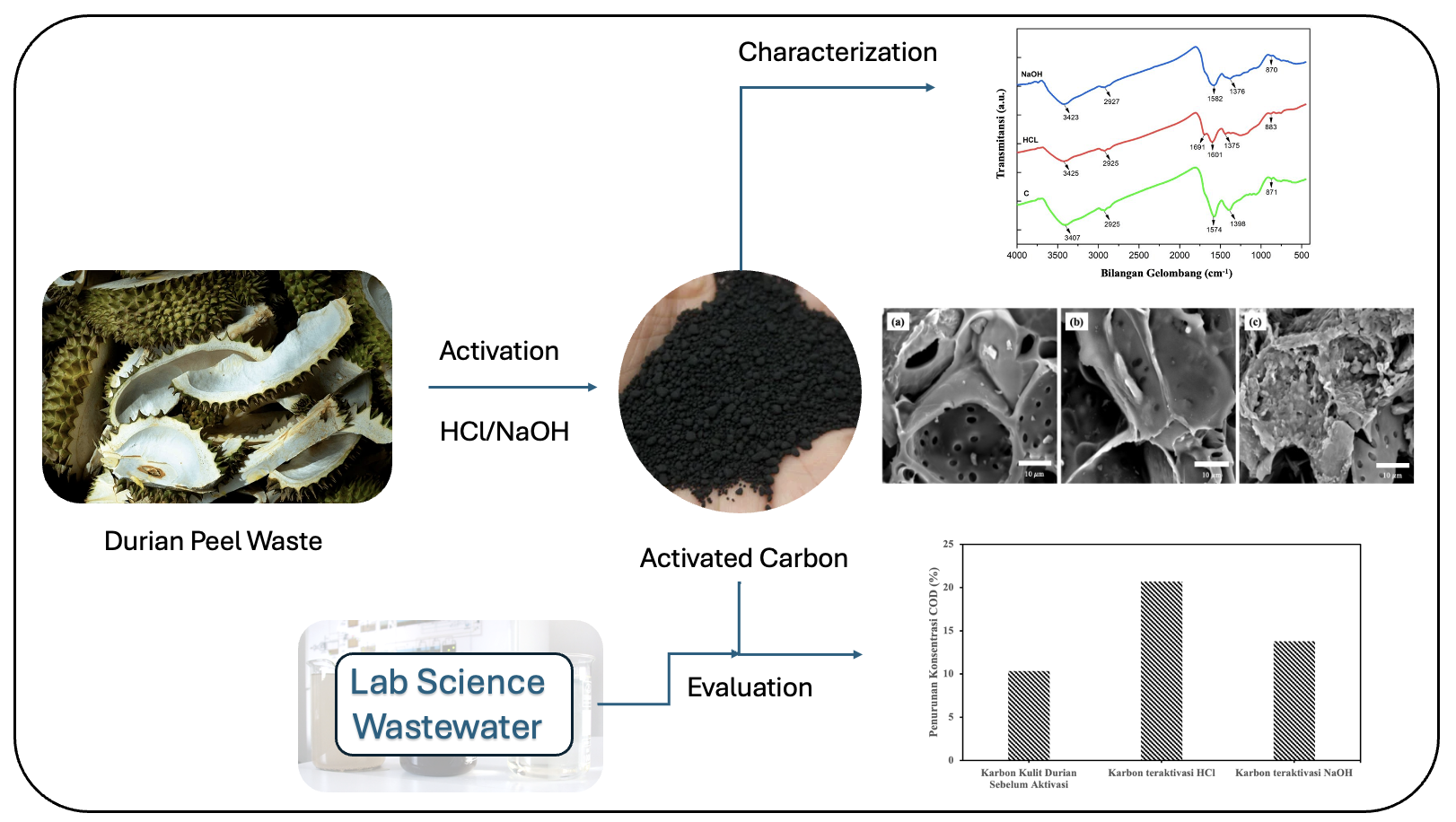Activated Carbon Adsorbent from Durian Peel to Reduce COD Levels in Science Laboratory Wastewater
Adsorben Karbon Aktif dari Kulit Durian untuk Menurunkan Kadar COD pada Limbah Cair Laboratorium Sains
Abstract
In this research, the preparation and characterization of durian peel activated carbon with acid and base activators has been carried out, as well as testing its performance in reducing COD levels in Sains Laboratory wastewater. Synthesis of durian peel activated carbon was carried out using the wet impregnation method followed by calcination at a temperature of 700⁰C for 3 hours. Characterization was carried out using FTIR and SEM-EDX. FTIR spectra results show changes in functional groups in activated carbon after activation with absorption at a wave number of 1691 cm-1 which shows a stretched C=C group. SEM micrograph results show that the pore size of activated carbon increases after activation. The activity test was carried out by comparing the reduction in COD levels in laboratory waste using activated carbon adsorbents activated by HCl and NaOH. COD levels in laboratory liquid waste were 29493 mg/L. An HCl concentration of 0.4 M was the optimum concentration to reduce the COD concentration in laboratory waste by 20.69%. These results show that activated carbon from durian peel could reduce COD levels and can be used as an alternative wastewater treatment in laboratory.






















